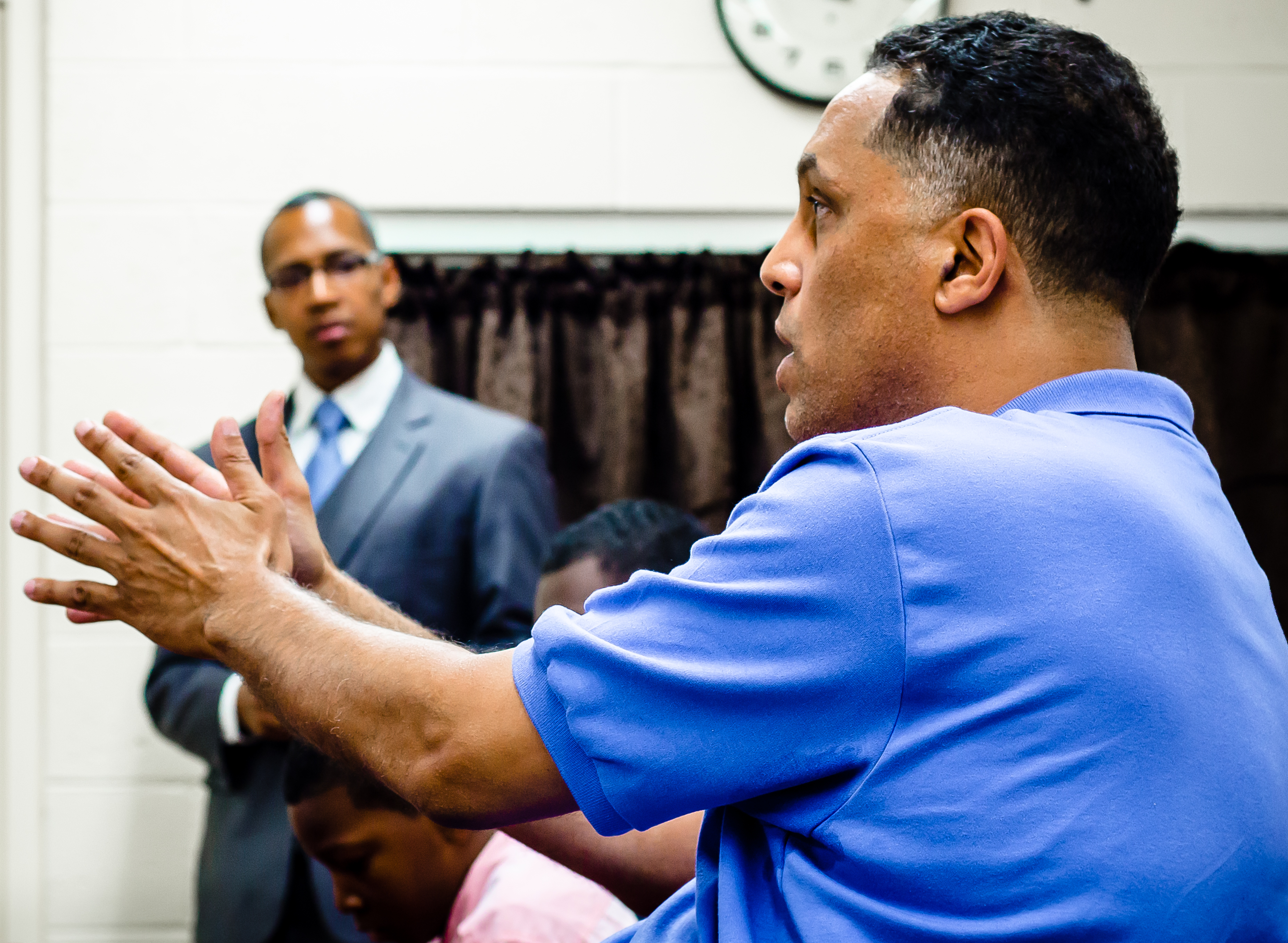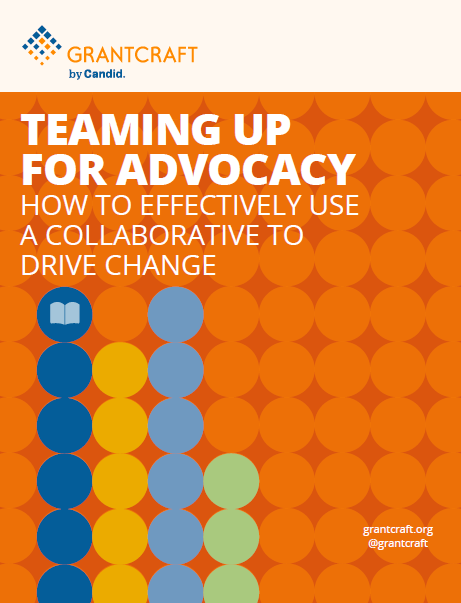Sticking Points: Grantee Roles and Relationships
Yes, there’s a power imbalance between grantmakers and grantees. Yes, everyone acknowledges it. Yes, even very experienced grantmakers wrestle with it. And yes, everyone says they try to break it down.
Reality suggests otherwise. Even the most egalitarian and self-aware grantmaker can slip into the “I know best” mode. Think not? Don’t ask other funders. Ask grantees. Better yet, ask grantseekers who didn’t make the cut. Most will say that no matter how hard funders try—and some do—they usually aren’t able to step outside the bubble. 
One funder said they constantly have to remind their colleagues that even just one grantmaker sitting at a table is going to change the dynamic, which is why she always allows time for grantees to converse without her or her colleagues in the room. “Funders like to think they’re very self-aware about their power and that they can keep this in check, but it doesn’t matter. Even if they don’t say anything, just their presence is going to affect what’s discussed, by whom, and with what angle. There is always going to be someone in the group that ‘shines’ for the funder.”
While other kinds of funder collaboratives may struggle with this issue, for advocacy funder collaboratives, it’s something that has to be addressed—publicly and frequently. Advocacy work demands clear and focused strategies that both advocates and their funders understand and, optimally, agree to implement together—all while constantly communicating and sharing information about real-time challenges and changes in the policy environment.
But who makes the decisions about which strategies will be employed? Funder collaborative members? Grantees? Or some combination of both?
A number of grantmakers say that they’re asking these questions more and more because of a surge of interest in participatory philanthropy, as well as growing awareness about the importance of walking the social justice talk in advocacy efforts. “We need to rethink how funders engage with on-the-ground actors as partners in this work. What does that look like, and what are the good models for doing so? Why not let the field leaders craft the strategy and then funders support it? If we’re preaching social justice, we need to walk the talk of empowerment and participation.”
That view isn’t always the norm. ”My grantmaker peers often don’t honor what’s coming out of the field. There’s a lot of funder arrogance, which is a tremendous problem in the field, and I don’t know how to address it.” Another agrees: “Too much of advocacy work is funder-driven. I’d rather that these ideas and strategies come up from the ground and have funders come behind them. In our policy collaborative, funders developed the framework for the field, and there was a lot of tension around that. Funders are never the experts; it’s always the people in the field doing the work.” Yet another funder who’s been involved in funder collaboratives where funders “see themselves as thought leaders rather than facilitators” believes those were never as effective as they could have been otherwise.
Some funders say they are very intentional about involving non-grantmakers as much as possible in their efforts. “It’s essential for the people involved in an advocacy collaborative to have a close relationship with the field. They tell us what they need and want. Our job is to move the money out to the field. We don’t know where to invest it unless the field tells us.” Another adds: “The groups we support are our ears and eyes as to what’s going on around the country. That’s why we’re always talking to them. Our staff talks to them regularly then shares what they’ve learned with everyone in our collaborative. In fact, we sometimes may over-rely on our grantees and have to be proactive in getting other information outside of the grantee pool!”
However, even with this intentional dialogue, there are challenges. True candor is sometimes hard for funders to hear, even if it’s in the context of sincere, open dialogue with grantees. “Unless grantees feel comfortable that they’re not going to get penalized for being honest, they’ll never be honest! The collaborative needs to create some system or feedback loop where everyone sees the value of honesty.”
There is also the issue of favoritism: “There are certain grantees with charismatic leaders, but those aren’t always the organizations that necessarily need the resources. The small advocacy groups are often doing the on-the-ground work and really need the resources. Sometimes, we had to watch money going out to the former, which was hard.” The open dialogue may create the illusion of equity and inclusion, but instead simple makes it easier for the most charismatic, connected groups to raise their voice and access resources.
Ironically, the tendency for advocacy collaboratives to provide multi-year grants—something that is in short supply overall and that most nonprofits “would kill for”—can contribute to these issues. “Unfortunately, when funders in advocacy collaboratives make large multi-year grants to individual projects, there’s a deep relationship of loyalty that’s created, which is heightened because it’s a group of people funding these projects. That sometimes causes a drift between the collaborative’s strategy and the organizations that are getting funding.” Moreover, it “jams up the resources that might be needed quickly in light of a policy challenge that requires another kind of organization to step in and deal with it.”
Stories From the Real World
As the leader of an advocacy collaborative-funded national campaign, I find that sometimes funders forget that the time frames are different when groups are in campaign mode. Yes, grantees want long-term funding, but I think it’s more important that grantmakers understand the priorities of the moment, which can change overnight in a policy battle, and allocate funds to these. But often, the advocacy collaborative donors are doing longer-term investments in stuff that’s not necessarily a priority. If I were in their place, I’d reduce funding for non-essential groups right away, but that doesn’t happen because the funder mentality is loyalty to these groups. Funders need to be pushed to balance the competing interests of loyalty and interest in groups that are dealing with what’s going on NOW.
I never participated in a campaign that wasn’t started by the advocates themselves. In our issue area, there were 15 nonprofit leaders who saw an opportunity but had no resources to do anything. We met with this group repeatedly and felt strongly that these were the people to do the job. Unfortunately, other donors in this space who were more controlling about what the money would be used for disagreed, which was frustrating. We eventually made a grant to a national coalition to work on the issue, which allowed it to decide how the resources would be used, and it was money well spent.
In our collaborative, we bring in non-grantmakers as advisors on the grants, but they don’t vote on the grant allocations. Staff from the national campaign our collaborative supports on this issue sit in and advise us on how best to capitalize on opportunities using a set of well-defined benchmarks. We also have someone there with expertise on what’s going on, policy-wise, in five or six states to advise us on the law in these states. All of these people inform the process and have a very important and active voice. I think that kind of participation is fundamental to a good advocacy collaborative. Otherwise, the collaborative starts representing the opinions of the biggest bullies at the table.
We had six local funds under our collaborative, each of which functioned differently than the others. In two of our sites, grantees were part of the decision making process, which is atypical. In one model, the grantees sat with the funders and made decisions about the percentage of allocations that would go to organizing and advocacy groups. In that site, they wanted organizing groups to be the leaders, but they wanted those groups to be smarter in doing their work by partnering with a legal advocacy group and media organization. In another site, the evaluation and shared goals/priorities were decided by grantee partners rather than the funders, but that imploded because funders didn’t want to give up that much power, and it didn’t allow them to be accountable to their own institutions.
It’s common for the grantees to always have a strong knowledge-sharing role in our collaborative. At any kind of convening of our collaborative funders, we always schedule donor briefings featuring the grantees to talk about what was going on in their regions and strategies. That’s critical because it’s very different than a funder going out on a site visit and getting individual reports.
We’re a national campaign representing a lot of groups working on this issue. We serve as advisor to the advocacy funder collaborative and have a little money to make small grants or hire contractors to do specific things in a state or county that’s on our priority map that’s independent of the grantmakers. We do meet with them twice a year to set priorities and discuss how those have changed as a result of what’s happened in the field that year. We describe what’s going on on the ground, and we have a lot of conversation with the funders about it. We also do briefings for funders throughout the year about key issues and to update them on what we’re doing. That seems like a lot of interaction and involvement, and it is. But there really hasn’t been much exchange backward from the funders to us. They pretty much still make the grant decisions. The good thing is that I’m there representing the field, so if there are questions, my colleagues can provide information. Happily, I don’t recall any grant decisions that were different from what we recommended.
What can advocacy collaborative grantmakers do to deepen their relationships with non-grantmakers?
- Be intentional about asking whether and how organizations can be involved in the collaborative’s work at each point in the process... Not every collaborative can involve non-grantmakers all the time and in every situation, but there’s value in being intentional about finding opportunities to do so. “It’s surprising how many times funders don’t think about involving grantees more directly in funding efforts. Non-grantmakers can be asked to provide information and analysis, as well as advice about strategy and even helping to make grant decisions.”
-
…but not always just asking for input. There’s a difference between input and authentic participation. Are grantees’ suggestions taken seriously? To what degree are they actually integrated into strategy or funding decisions? “Funders need to recognize the difference. I’m a non-grantmaker who manages campaign efforts; I want to know before I engage with a collaborative whether they have resources that can be brought to be bear before I expend the one thing I never get back, which is my time. I see so many practitioners who say ‘this collaborative wants all this information, but there’s no promise of any support.’ But busy organizers and advocates will drop everything to meet the demands of a funder and may never get anything for it. Some of us are now stopping to ask ‘What do we get out of this’ and if the answer is ’little,’ we think it’s a waste of time.”
-
Be transparent about the collaborative’s process, criteria, and grant decisions. Nothing creates more confusion and misunderstanding than advocacy collaboratives that “obfuscate or just don’t convey what they’re doing and why to the field. This work is so time sensitive, when there is miscommunication or confusion, it has a ripple effect across the entire campaign.”
Even funders agree that as robust as an advocacy collaborative infrastructure might be, most still tend to operate as a black box. “There’s a total mismatch of expectations and lack of understanding because the process is shrouded in mystery. There needs to be more transparency about how decisions get made, who makes the decisions, how much money funders have. Otherwise, grantseekers get discouraged, and funders don’t care.”
-
Check on the loyalties. Periodically check to make sure the grantees getting resources are those that need them rather than those who’ve been supported for a long time or have more name recognition. One of the best ways to ensure this is to bring in outside experts to challenge the group’s assumptions on a regular basis. To encourage honesty, ask them to provide anonymous comments on the collaborative’s strategy and/or funding decisions.
NOW REFLECT:
- Should we involve grantees (or non-grantmakers) in our decisions about priorities, strategies and/or funding? If so, why and how? If not, why not?
- How will/do we see non-grantmakers? Are they partners in this work? Leaders? Implementers?
- What kinds of policies do we need to put in place regarding potential conflicts of interest, confidentiality, protection against retribution, etc.?
FURTHER READING:
- How Funder Collaborations Flourish: Lessons from the Common Core Standards
- Forging Structures, Systems and Policies that Work in Communities Stories and Lessons from Building Healthy Communities
Please click here for information on GrantCraft’s methodology for this research.
(Photo: Erin, licensed under CC BY-NC-ND 2.0)


